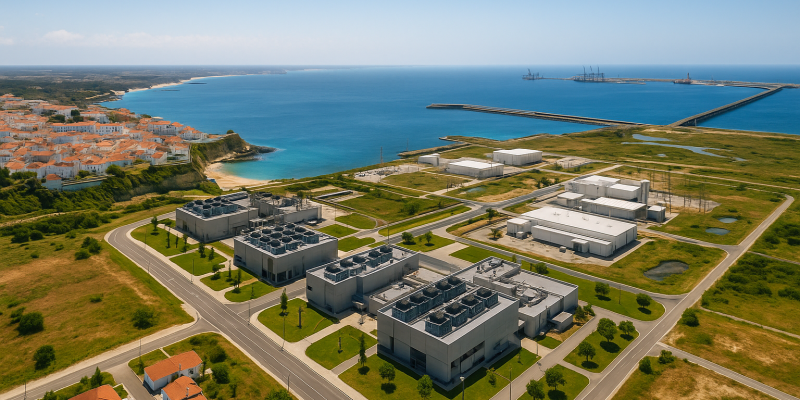
Microsoft is investing $10 billion to transform Sines, a quiet port town in Portugal, into a critical node in its global AI infrastructure.
The town, known more for its fishing heritage than data servers, is now at the centre of a massive shift in how cloud giants are building capacity for artificial intelligence.
The project, which involves six large-scale data centre buildings, is being developed in partnership with Portuguese operator Start Campus and British startup Nscale.
Microsoft’s President Brad Smith disclosed the investment to Jornal de Negócios during the Web Summit in Lisbon.
The confirmation places Portugal firmly in the spotlight as one of Microsoft’s major European commitments this year.
The move aligns with Microsoft’s broader strategy to reduce reliance on traditional hyperscale data centres and pivot towards scalable, strategically located infrastructure to meet the growing computational demand of AI models.
Sines connects continents through digital cables
Sines is not just geographically convenient. Its coastal position gives it unique access to transatlantic undersea cables that connect Europe to Africa and South America.
These cables are vital for reducing latency and increasing bandwidth across continents.
Google is adding to this by laying a new fibre line between Portugal and South Carolina, further enhancing the location’s global data reach.
The choice of Sines is far from arbitrary. The region already serves as a hub for subsea cable landing stations, giving it low-latency access to several continents.
For a company like Microsoft, which is deploying AI models across regions, speed of access is critical.
The site in Sines offers both physical and strategic proximity to emerging markets and well-established digital corridors.
In March 2025, the first of six planned data centre buildings was completed, setting the stage for broader buildout phases.
Start Campus confirmed that Microsoft’s $10 billion commitment aligns with ongoing development planning for the remaining five buildings.
Microsoft adjusts its infrastructure strategy
With the explosion of generative AI workloads and increasing demand for distributed cloud capacity, Microsoft is redesigning how it builds out infrastructure.
In addition to traditional facilities, it is collaborating with neocloud providers such as CoreWeave Inc and Nebius Group NV. These firms offer niche, high-performance cloud services optimised for AI tasks.
In October, Microsoft signed a multi-year lease agreement to secure capacity at the Sines site. It has also inked separate deals to lease infrastructure from Nscale in Norway and the United Kingdom.
The company is building redundancy, diversity and resilience into its infrastructure network, positioning itself to serve both enterprise customers and global developers relying on its Azure cloud services.
AI computing requires not only dense data centres, but also high-performance networking and massive power capacity.
By partnering with local developers and regional players, Microsoft is speeding up its deployment timelines and avoiding some of the bureaucratic slowdowns seen in other EU markets.
The post How a quiet Portuguese port town became Microsoft’s AI launchpad appeared first on Invezz










